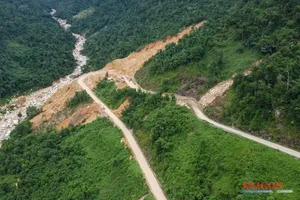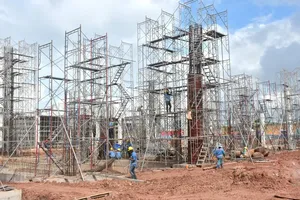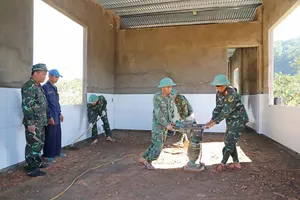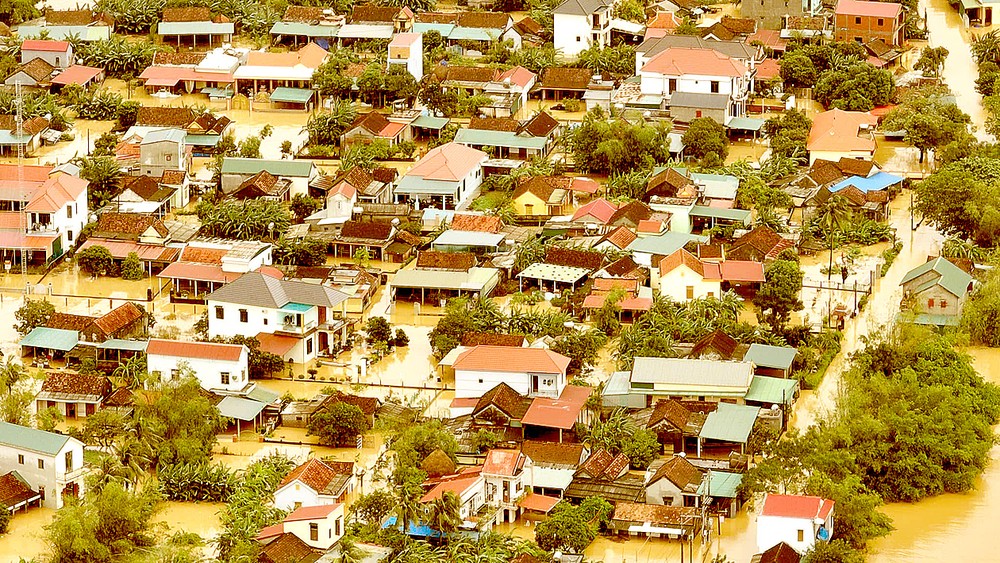
The aftermath of Typhoon No.6 (Typhoon Trami) brought widespread rain, with recorded rainfall at An Ma Station exceeding 736mm. This led to rapid flooding in Le Thuy, Quang Ninh, and Dong Hoi City (Quang Binh Province), submerging over 20,000 households. Meanwhile, the community tourism village in Hoa Bac Commune (Hoa Vang District, Da Nang City) was left devastated as floodwaters surged through after the storm. The Central region now braces itself once again, battling floods after the storm.
Community tourism village devastated
On October 28, after Typhoon No.6 passed, the community tourism village in Hoa Bac Commune (Hoa Vang District, Da Nang City), located along the Cu De River, was left in shambles. Zo Ram Thi Hong, owner of the Zo Ram Thi Hong homestay in Gian Bi Hamlet, Hoa Bac Commune, shared that just as the typhoon was ending, heavy rains began, and floodwaters rose rapidly, threatening to sweep away the riverside stilt houses. Machinery and electronic devices submerged in the water were damaged.
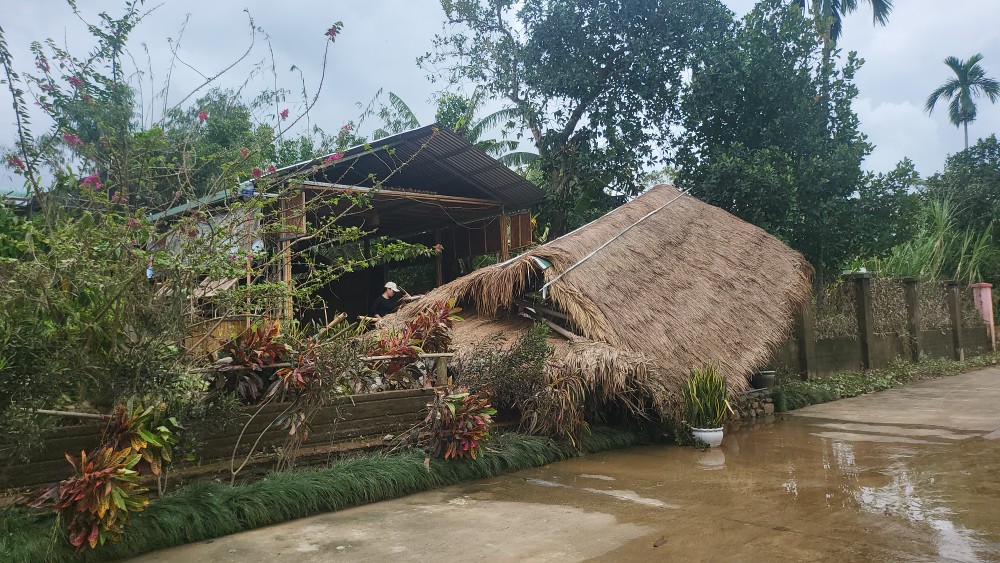
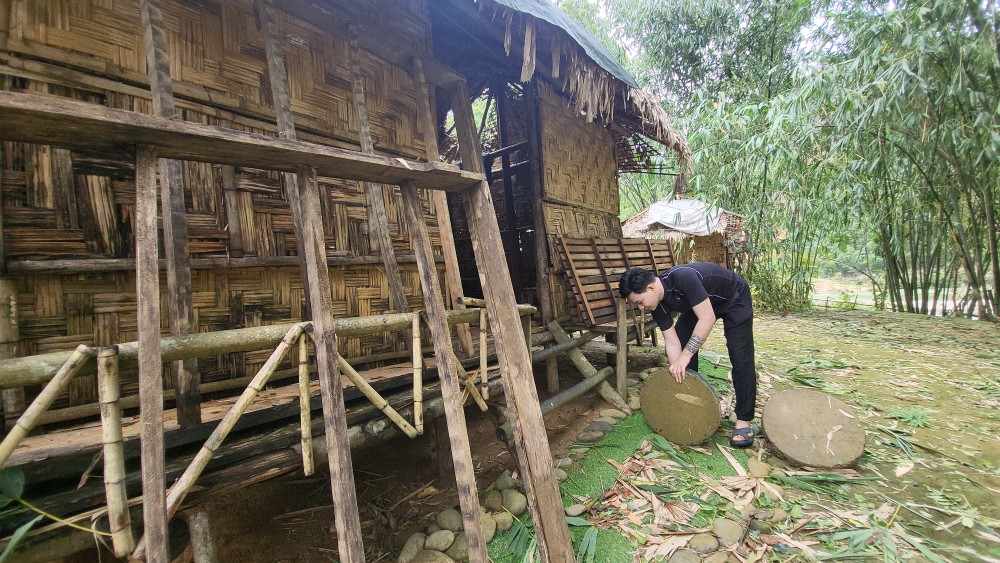

Truong Xuan Toan, owner of Mang Chill Vung Bot in Gian Bi Hamlet, Hoa Bac Commune, said that after the relentless storm and the ensuing floods, the village, along with its gardens and trees, lay in ruins.
Situated at the entrance to the Hoa Bac hanging bridge, Nguyen Xuan Diep’s thatched cottages in Nam Yen Hamlet, Hoa Bac Commune, once served food and drinks to visitors but were completely destroyed by the storm. Diep shared that for years, eco-agriculture combined with community tourism in Hoa Bac has helped lift local residents out of poverty. Now, however, the devastation from the storm and floods has taken away their primary source of income, impacting numerous households, including many from the Co Tu ethnic minority.


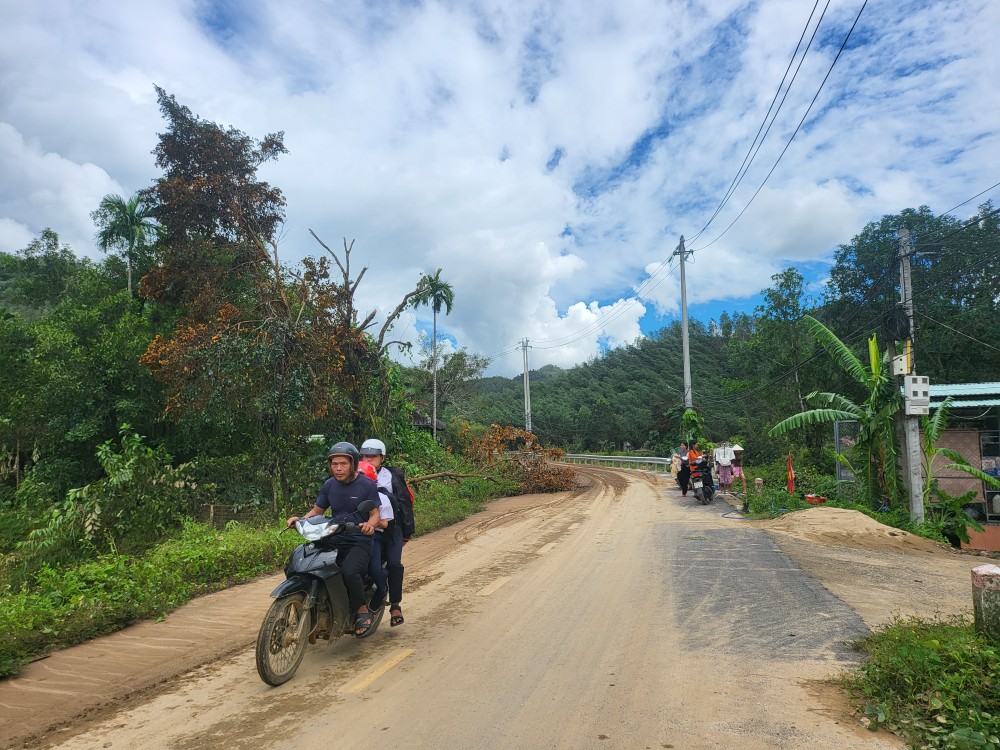
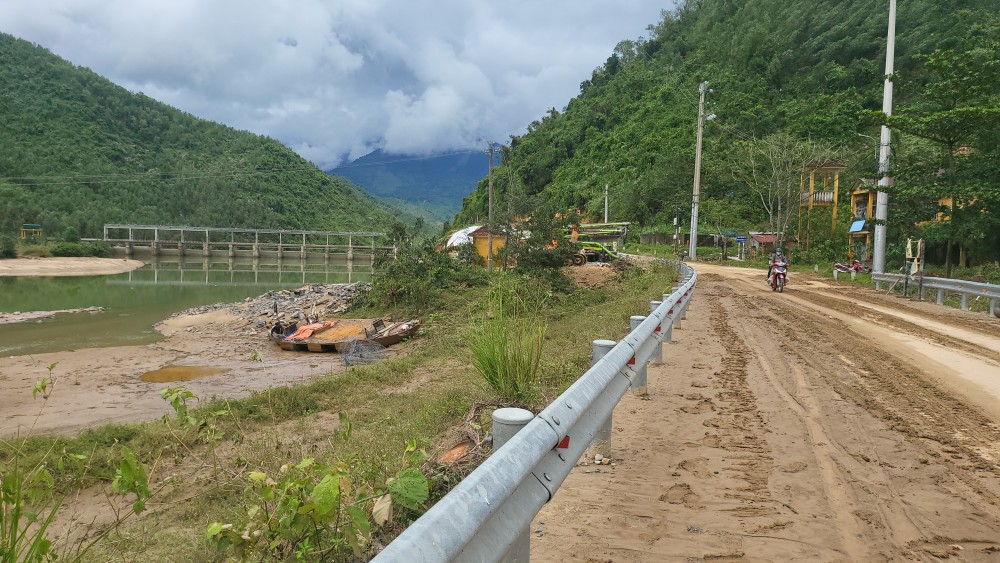
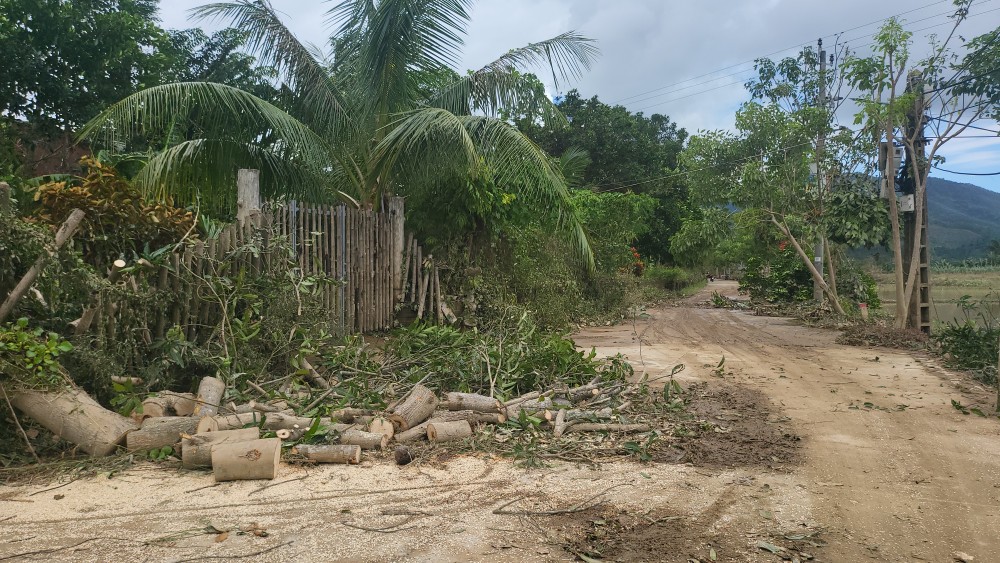
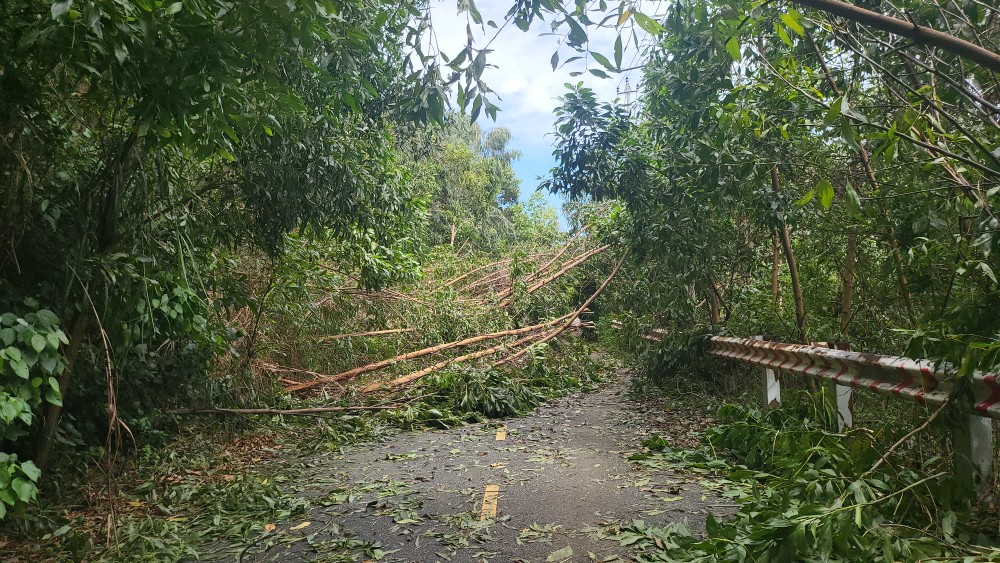
Mr. Thai Van Hoai Nam, Chairman of the Hoa Bac Commune People’s Committee, reported that local authorities are urgently working to recover from the aftermath of Typhoon No.6 and the floods caused by the rising Cu De River. With waters now receded, evacuated residents are returning to restore the community tourism village.
Overnight flood evacuation
Due to Typhoon Trami’s circulation, floodwaters from upstream submerged more than 20,000 households in Le Thuy, Quang Ninh, and Dong Hoi City (Quang Binh Province).
In Tan Ninh Commune (Quang Ninh District), Nguyen Thi Tuyen, a resident of Quang Xa Hamlet, described how two days of heavy rain caused the water to rise rapidly, forcing residents to stay up all night evacuating each other to safety. Next door, floodwaters surged a meter high inside Nguyen Van Quy’s home. “The water rose so fast, and it flooded in during the night,” he shared. “We managed to move what we could to higher ground and had stocked up on supplies in advance. The power was out over a large area, but thankfully, everyone had gas canisters to cook and survive through the flood.”
Mr. Nguyen Van Hoan, Chairman of the Tan Ninh Commune People’s Committee, noted that after the historic floods of 2020, residents had reinforced their homes and built additional flood shelters next to their main houses. Hamlets with multi-story homes offered shelter to families from lower-lying houses, making this nighttime evacuation more manageable than before.
Straining to recover
On October 28, hundreds of officers and soldiers from the Thua Thien Hue Border Guard, along with local emergency response teams, were deployed to assist households severely impacted by Typhoon No.6 in the communes and town of Lang Co, Phu Loc District. The immediate priority is supporting 210 households, primarily in the communes of Loc Dien, Loc Thuy, Loc Tri, Loc Tien, and Vinh My, as well as the towns of Phu Loc and Lang Co, where homes were damaged or lost their roofs, to help residents regain stability as soon as possible.
Meanwhile, the Thanh Hoa Department of Transport reported that landslides caused by recent rains and floods are still unaddressed due to budget constraints, with funding requests currently awaiting approval. Heavy rains from Typhoons No.3 and No.4, along with cold fronts, triggered nearly 200 landslides along national and provincial roads.
National Highway 15C alone has approximately 140 landslide sites with an estimated 46,481 cubic meters of soil and rock, while National Highway 15 has ten landslide sites totaling about 4,100 cubic meters, and National Highway 47 has seven sites with roughly 2,047 cubic meters. Many provincial roads in Muong Lat, Quan Hoa, and Quan Son districts also sustained severe damage and remain in urgent need of repair.
Heavy rain and strong waves have led to severe coastal erosion along sections of the shoreline near Hai Thanh Hamlet, Ky Loi Commune (Ky Anh Town, Ha Tinh Province), cutting 3 to 6 meters into the land and now approaching within 30 meters of residential areas. The erosion continues to spread, yet no mitigation measures have been implemented. Similarly, the coastline near Tan Ninh and Hoi Tien hamlets in Xuan Hoi Commune (Nghi Xuan District, Ha Tinh Province) is also experiencing significant erosion, encroaching roughly 3 meters inland along a 150-meter stretch.


